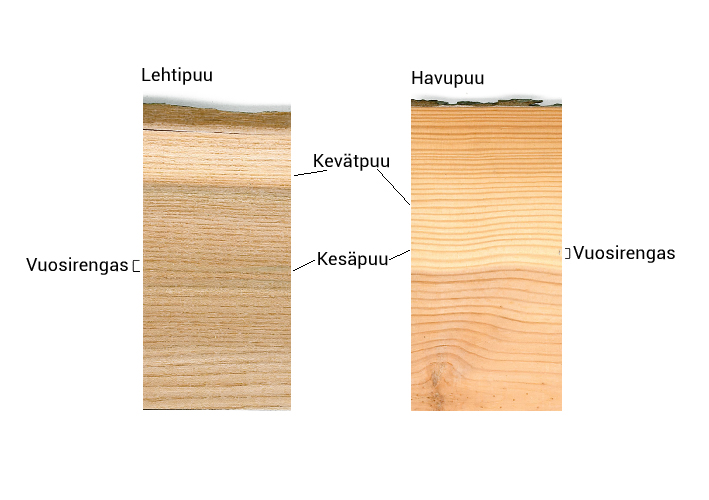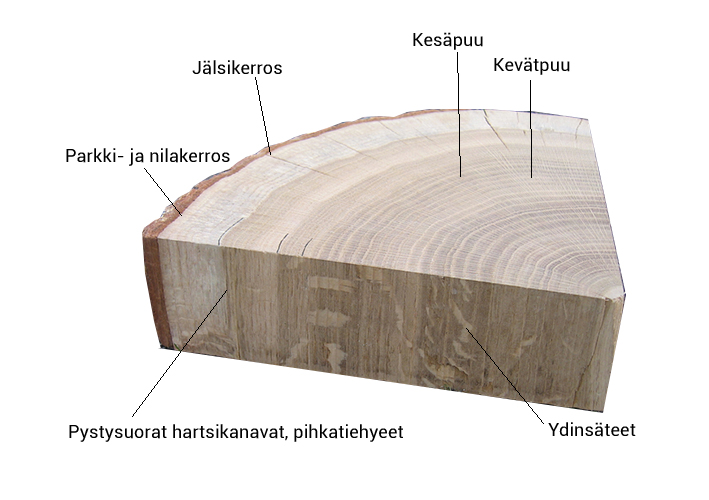The width of the early wood of a deciduous tree is usually the same regardless of the growth rate. Conifer trees are slightly different compared to deciduous trees as they grow at the same rate each summer meaning that the late wood is the roughly the same width each year.

Because the desirable quality of a tree is hard and dense, the deciduous tree is ideal since it grows fast where as the conifer trees grow slowly. This also means that the conifer trees are nicer to work with if you are looking for good quality wood.
The cross-section of many woods shows thin lines that make circles around the heartwood.
These rays are vertical cells that move water and nutrients from outside of the tree to the living parts of the tree on the inside. The width of the rays varies between woods. In many trees the rays are so small that you can’t see them with the naked eye. Some however have rays that show very well such as oak.

Radial cut wood shows a pattern that can be used as a decorative wood. Oak, elm and maple have patterns like this and are often used when looking for decorative furniture.
The outer layers of the wood are vascular cambium, bark and the cork. The vascular cambium divides cells by moving new wood cells inside for making new wood and older wood outside to make bark. The older bark that then moves outside becomes the cork and transforms in to a protective layer for the tree. The cork is the dead part of the tree.
The hungry tree
When trees like the slow growing conifer, which are hard and heavy, live in conditions where they don’t get enough light and/or live in a forest that is too dense, this makes the trees grow short and thin each year. This means that the trees will be light and soft making them unusable. These type of trees are usually seen in Lapland.